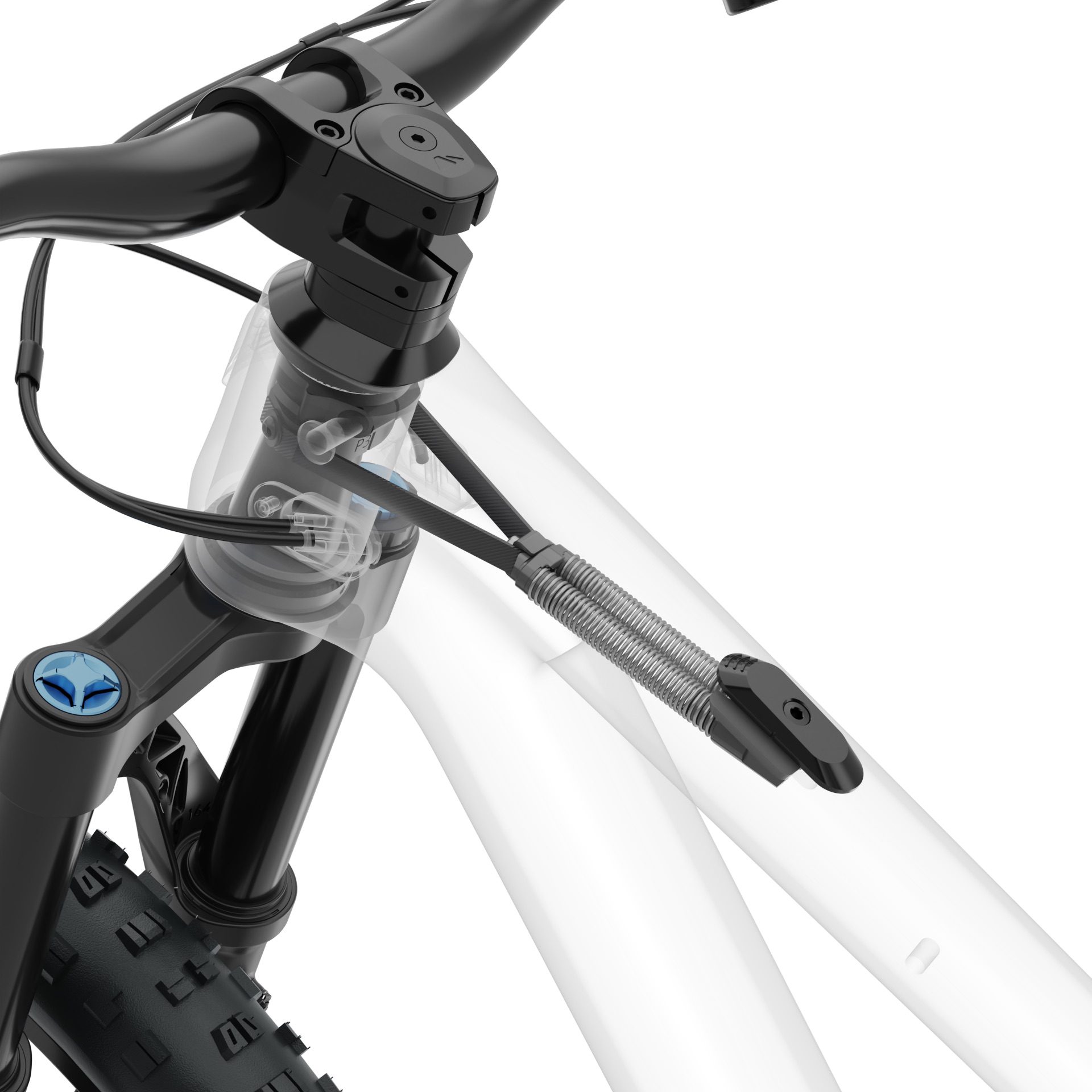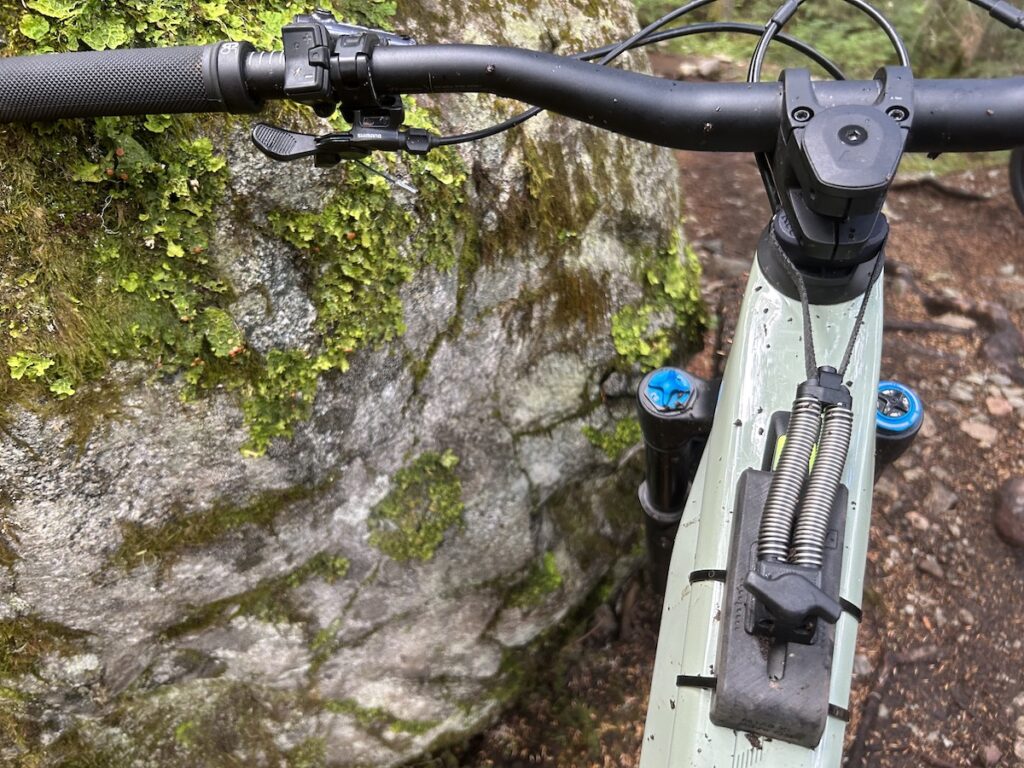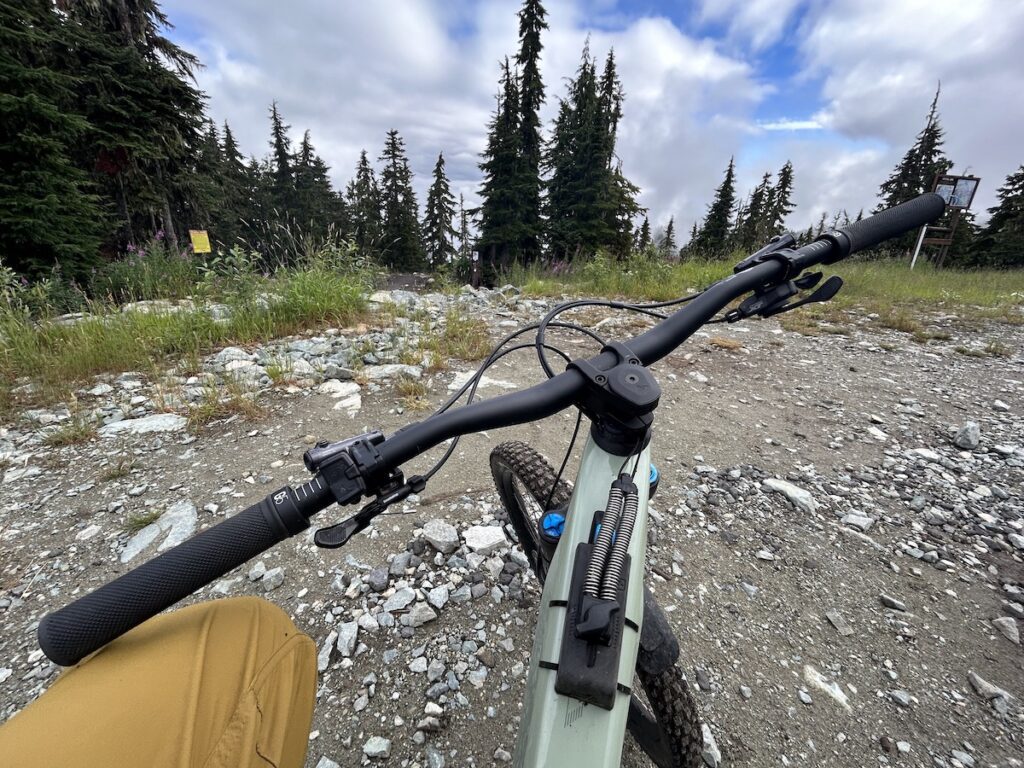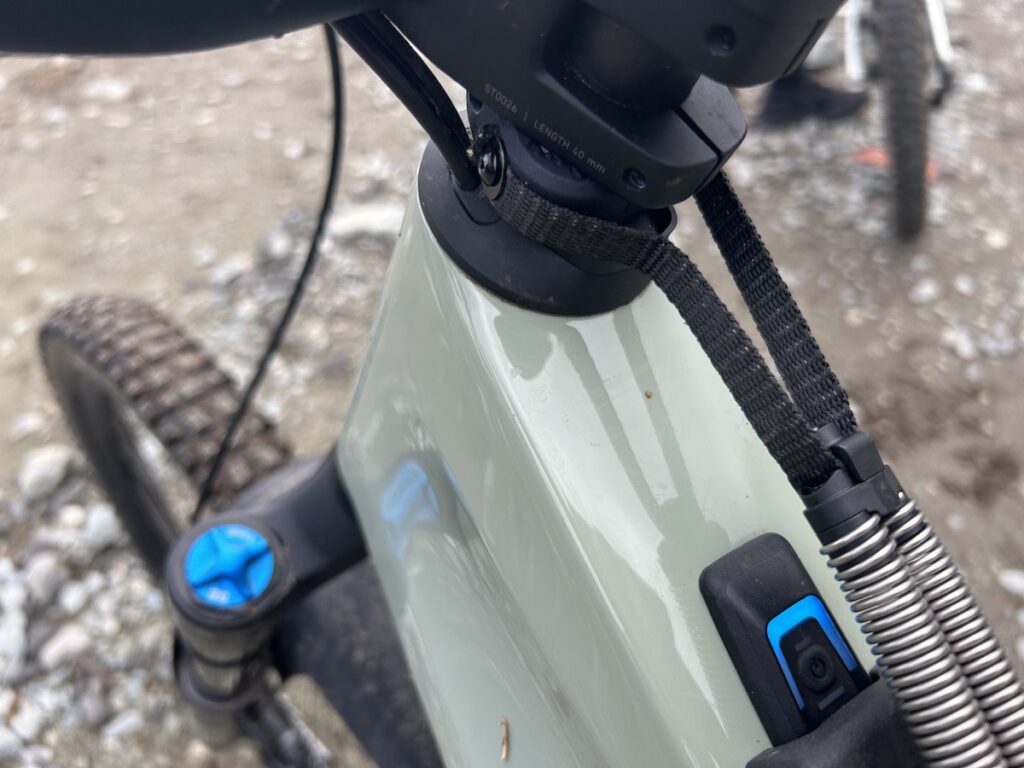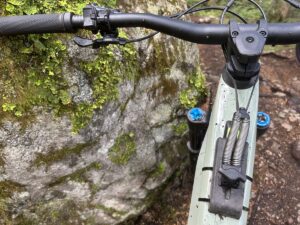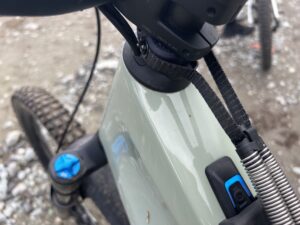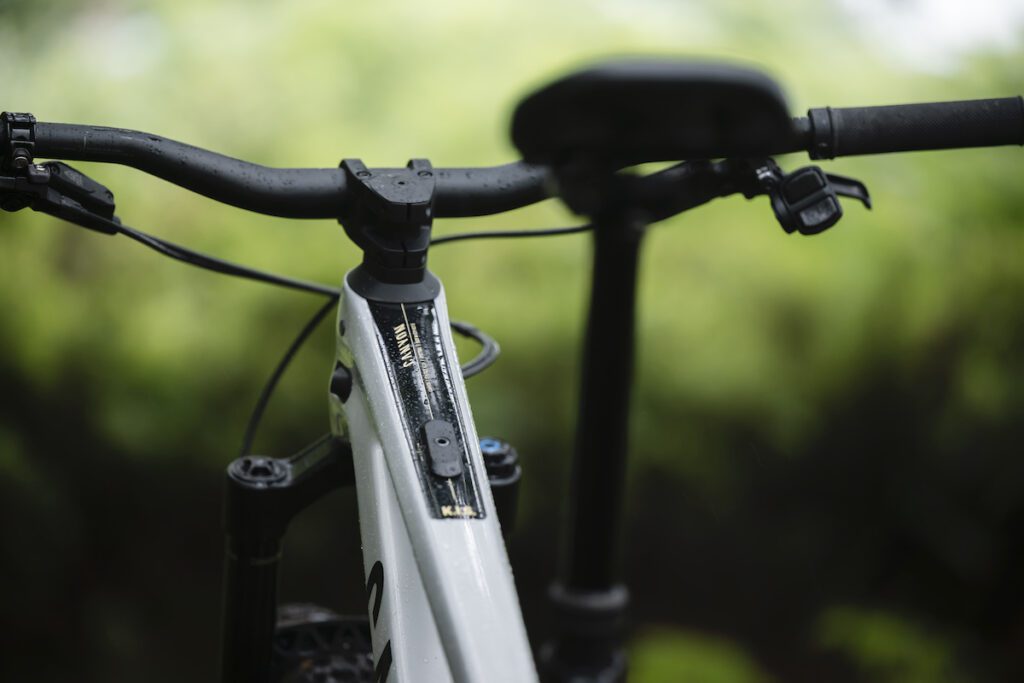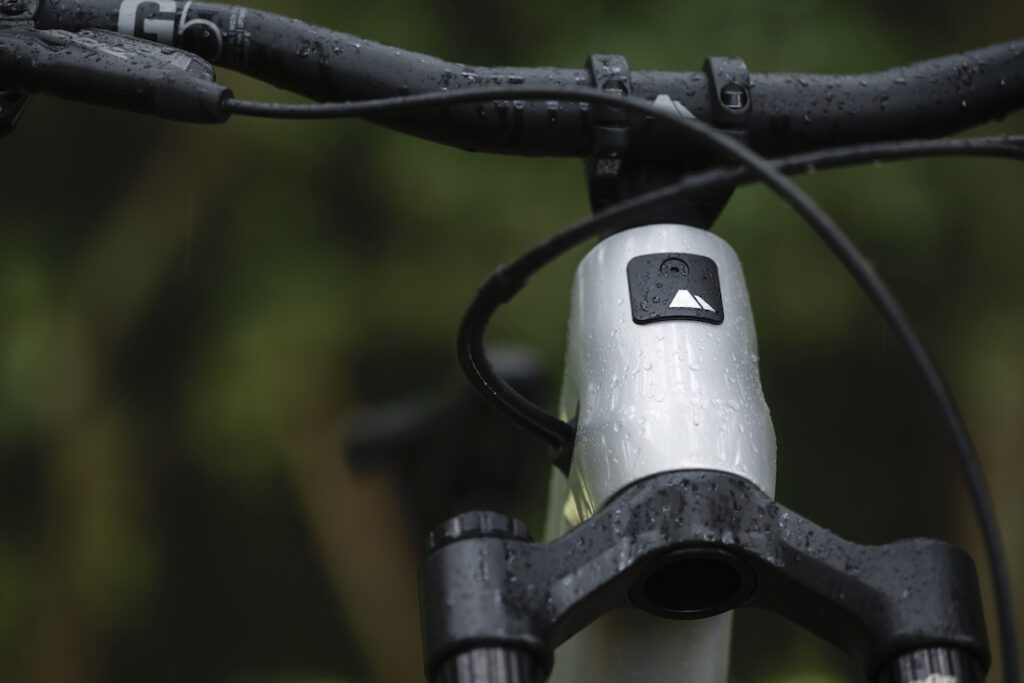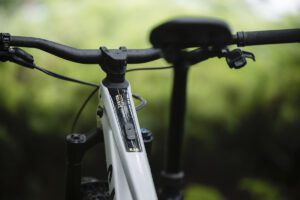Trail testing Canyon K.I.S. at Crankworx
Slipping and sliding down Dark Crystal to try to divine the stabilizer system's secrets
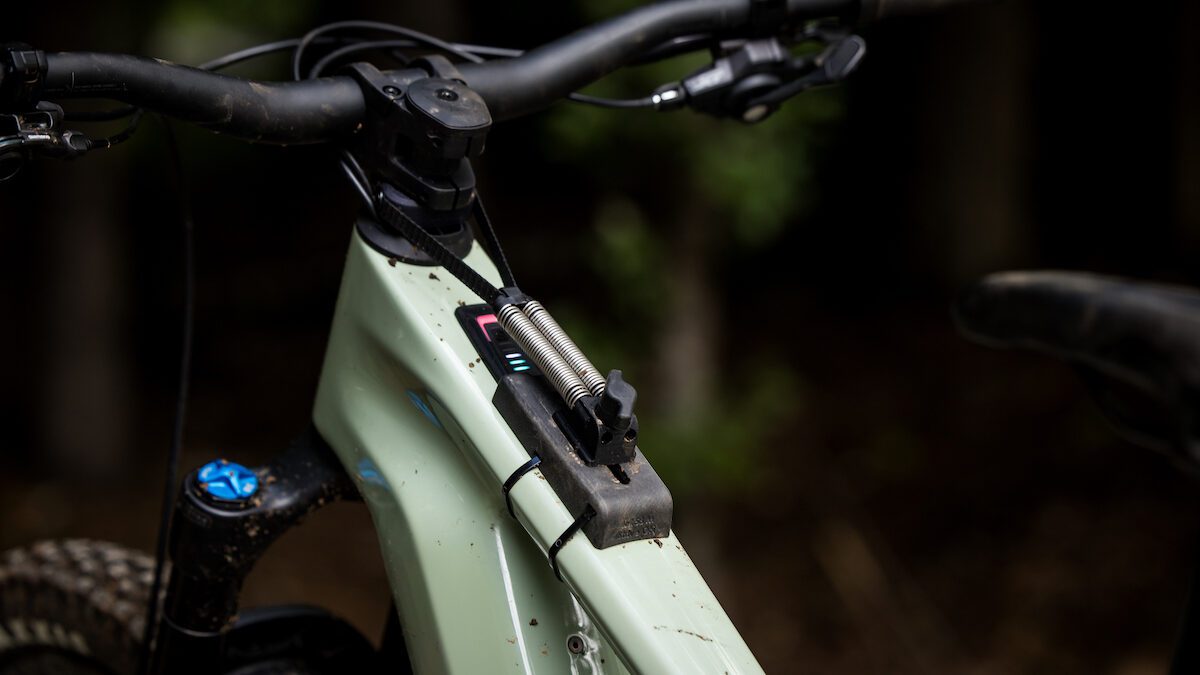 Photo by:
Boris Beyer
Photo by:
Boris Beyer
During Crankworx, I had the chance to try out a version of Canyon’s new K.I.S. steering stabilizer system. It’s been a few days since Crankworx wrapped up but it took a few days to get some perspective on the test ride. Because K.I.S. is not really what I expected going into the ride, to be honest. It is different. It might be a bit weird, but it is definitely more interesting than I was expecting.
What is K.I.S.?
Canyon launched its K.I.S. (Keep It Stable) steering stabilizer (the Germans are not calling it a steering damper) earlier this year on select Spectral models. The production version is tucked away neatly in the top tube. Canyon had a very not-production version mounted to several Strive:ON eMTBs in a similar fashion to how Troy Brosnan was testing the system at the Lenzerheide World Cup. While not pretty, it did a better job of showing exactly what was happening in the K.I.S. system.
While less high-tech than the cycling industry’s current push towards electronic and wireless parts, K.I.S.’s system of straps and springs is actually more nuanced than it looks. Each component of the K.I.S. system opens an opportunity to fine-tune the system and how it changes how bike handles. The length of the straps, the angle they connect to the springs, the length of the springs and where the system is placed in/on the top tube, all have an impact on how the system feels. Canyon CLLCTV team manager Fabien Barrel is reportedly really into the project and is deep into experimenting with how you can tune different ride qualities of the bike by making small changes to the system.
How K.I.S. works is remarkably simple. As you turn the bars, the rotation of the steering tube causes the straps to pull against the springs. As the spring stretches, it resists more. So, after an initial range where there is little resistance, the system slows your steering slightly more. Crucially, for Canyon, K.I.S. is also pulling your bars back to center. This feature, constantly pulling back to center, is what Canyon says separates K.I.S. as a stabilizer instead of a simple steering damper (which would just slow steering input).

Why add K.I.S.?
Canyon cites a few reasons to add K.I.S. to a bike, instead of sticking with the K.I.S.S. design principle. There are two main reasons.
First, as head angles get slacker and wheelbases get longer, the front wheel is further and further away from the rider. This can lead to an increased tendency for the front wheel to “flop” in tight corners. The stabilizer aims to reduce this tendency.
Second, the K.I.S. system aims to reduce the fatigue caused by balancing constant steering and oversteering input as riders try to keep a bike going where they want it to on the trail. The less the front wheel deflects away from your direction of travel, the less work you have to do to bring it back. These small, and even micro-adjustments add up over the course of a ride. Or, for the racing crowd, over the course of something like Candian enduro national championships 15-minute stage from off of Whistler’s Top of the World.
K.I.S. on the trails
Our route for the K.I.S. test ride was up Blackcomb to a few local-favourite tracks including the iconic Dark Crystal trail. To keep our small group moving together, the stabilizer was installed on Strive:ON e-MTB’s. That meant we had enough trail time to play around with the system by turning it on, off, and halfway on a few times over the ride to really feel the differences in how the system changes how the bike handles.
Dropping into our warm-up trail, the bike honestly didn’t feel that different. If I was expecting some dramatic change from the small, 3-D printed box and spring, it didn’t happen. I maybe felt a little more effort with the upper body, but that could have been the eMTB … or the early morning start mid-Crankworx.
The difference in how K.I.S. felt was more immediately obvious on the eMTB while climbing. That’s not the most interesting part of riding with the stabilizer, but it is easiest to feel, and separate out the effects the system has while going uphill.
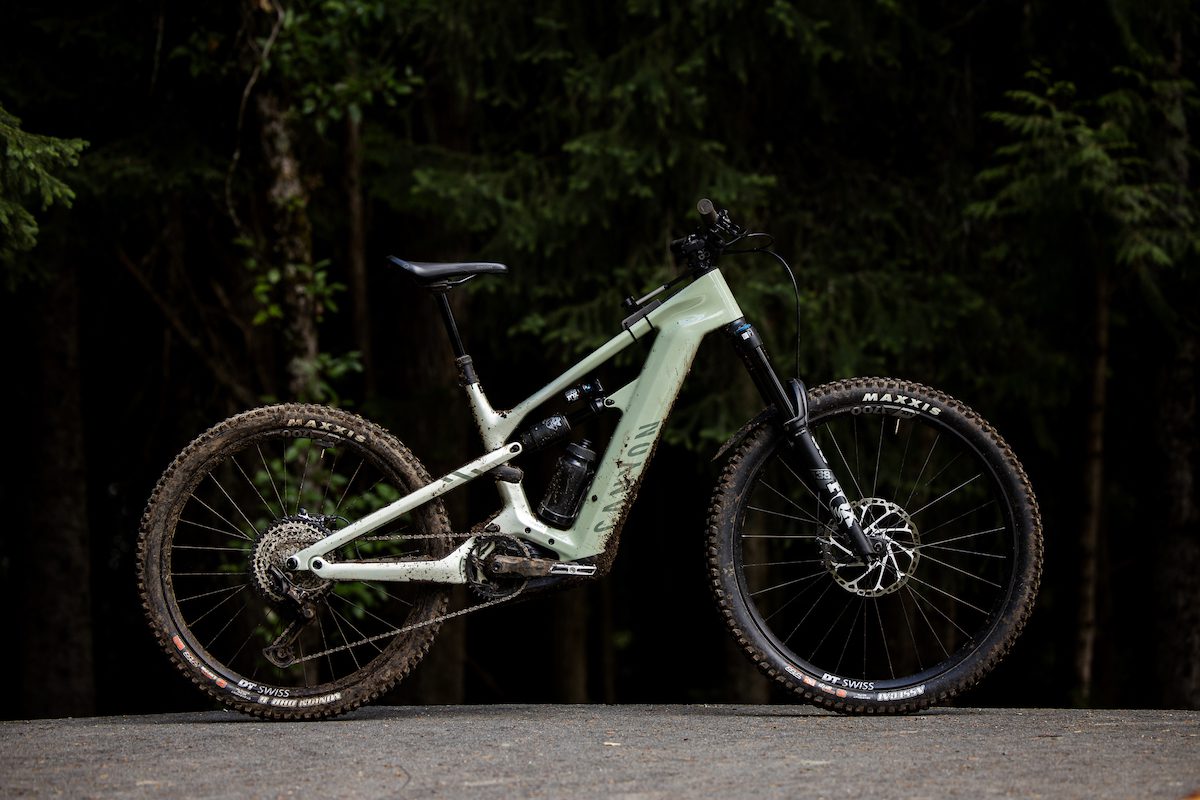
The route up Blackcomb is steep and full of fist-sized rocks. Normally, it’s a struggle to keep the wheel moving forward instead of bouncing off line while trying to power up the steep grades. With K.I.S., I barely had to hold onto the bars (the motor helped, too, of course). The wheel would deflect a little of chunkier rocks, but only momentarily. K.I.S. would correct the bars back to straight before I had a chance to add my own steering input. It kept me closer to my line and prevented any oversteer in the opposite direction.
This worked on the smoother, reasonably tight radius turns on Blackcomb’s new climbing trail, too. I could keep the lightest touch on the bars and still steer around corners almost entirely by turning my hips and leaning the bike without worrying about what the front wheel was going to do.
On the downhills, K.I.S. has the same input on steering, but to a different effect. It sort of lets you get out of your own way. You can still easily make fine adjustments but the system slows over corrections a bit. That helps keep you centered instead of overcorrecting after a big turn of the bars. It won’t steer for you, by any means, or stop you from steering. But it works to smooth out steering inputs.
Turning the system off, by giving the springs more slack, showed how much of an effect this was having even if it didn’t feel like a huge change. It immediately felt way easier to steer, wiggle and move the front wheel around. It also felt harder to keep the roots from making the front slide and move around, too. But I’ll admit, loosening the bars a bit did feel like freedom. Re-tensioning the K.I.S., on the other hand, felt like stability.
As mentioned above, how K.I.S. brings the bars back to center can feel a bit weird at first. But I’ve also been in positions where I was so fatigued while riding that I really wasn’t capable of fine adjustments anymore, leaving me constantly oversteering, or overcorrecting and rarely on the line that I wanted. Something like K.I.S. would, I imagine, have been very welcome in that situation. And again, as mentioned above, you can adjust the level of stabilization K.I.S. provides mid-ride.
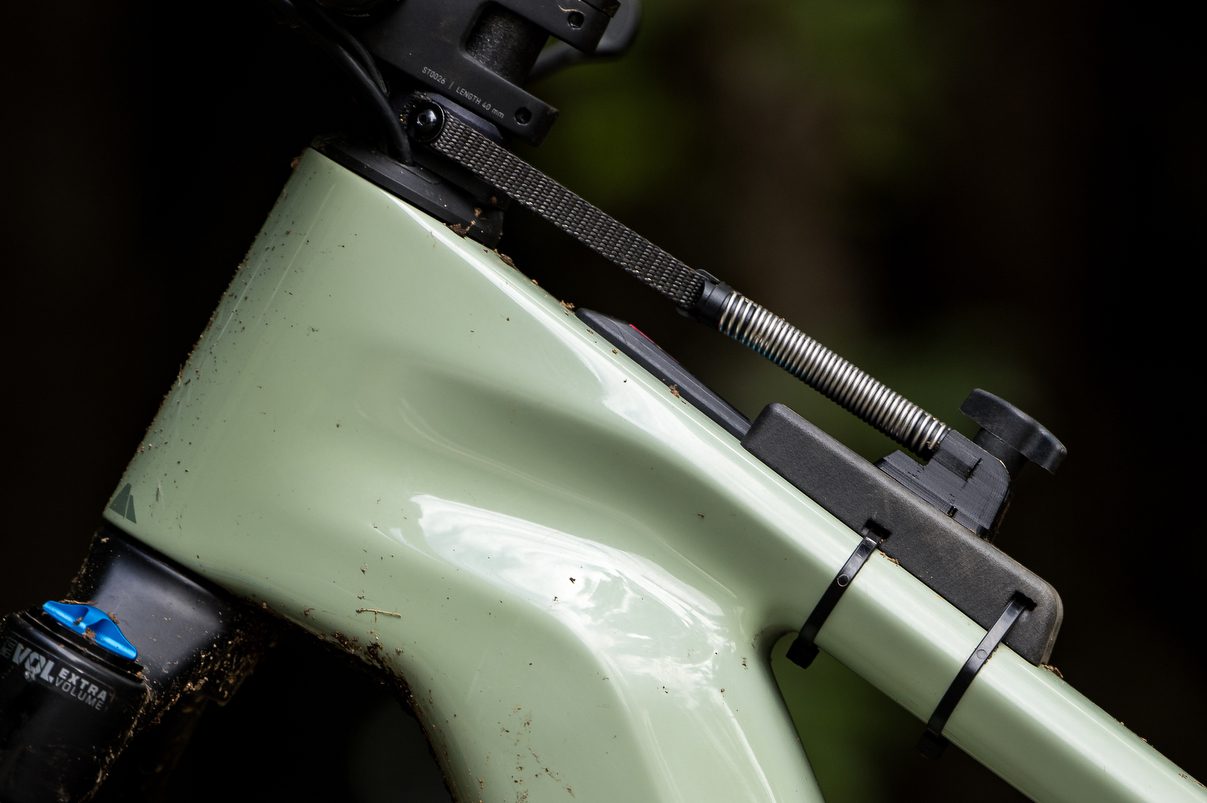
It’s not all about the back wheel
While K.I.S. is attached above the front wheel, that’s not the only part of the bike it impacts. The way K.I.S. helps prevent the front wheel from folding in tight corners also helps make it easier to bring the back end around. As enduro national champion, reigning Enduro World Series champion and Whistler local Jesse Melamed explained, you can just dive the front wheel into steep, tight corners and it will pull the back wheel through with more exit speed. Wet conditions and greasy roots – and my general lack of talent relative to Melamed – meant there were only a couple of corners where I was confident enough to even try this, so I can’t really confirm or deny that with any confidence.
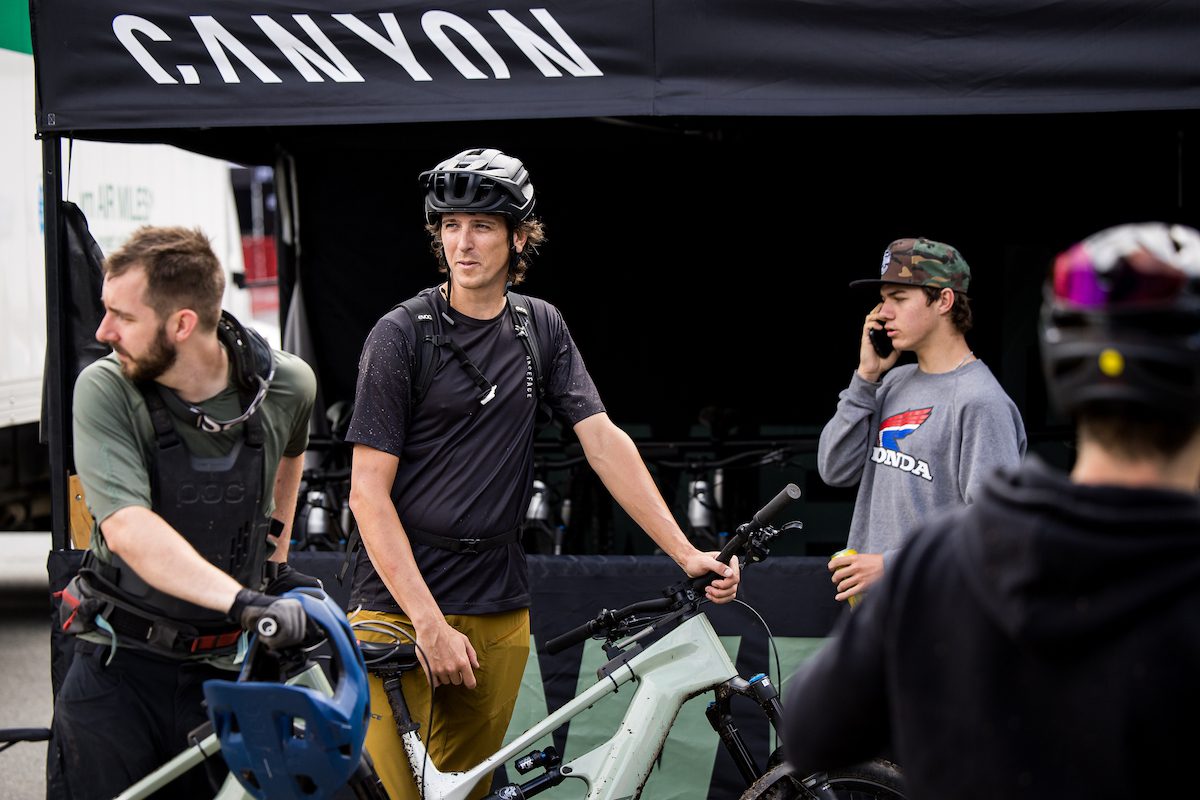
K.I.S.: A false romance or a bon amour?
One ride isn’t enough to pass judgment on the system, carte blanche. Especially when I was using the McGyver’ed external version of Canyon’s system. It was enough to get some impressions on how the system might appeal to some riders and maybe not others.
One benefit is definitely the reduced fatigue. Even just on the climbs, it required less effort to keep the bike moving forward. Descending, the system does feel like it requires a bit more initial effort, or at least a slight adaptation in how you ride to let the bike do more work. That said, I did also appreciate turning it off on the trail. Dark Crystal wasn’t the fastest trail, especially in the wet, and I can see this having more benefit over rough trails at higher speeds.
It does add complexity to the bike, though. While Canyon says the integrated system requires no maintenance, in the great words of Dr. Ian Malcom, life finds a way. If there is a thing that can be broken, mountain bikers will break it. And, as an increasingly luddite-leaning retro grouch, adding another system that can be broken doesn’t seem like a great idea, unless it really improves the riding experience.
Who is K.I.S. for?
Whether or not K.I.S. appeals to you, I think, will have more to do with your riding style than, say, skill level. If you find your upper body fatiguing over long downhill runs, or just struggle to keep control over steering in rough trails, this could very well help. But Canyon envisions K.I.S. being for all riders.
As mentioned, Jesse Melamed joined our media ride. Interestingly, that ride (and several more over the week) was enough to convince the notoriously gear-curious Canadian to give an external K.I.S. system a go on his Strive race bike later in the week at enduro nationals, which he won. So if you’re the type of rider entirely focused on finding the fastest way down the mountain and staying on precise lines, K.I.S. could be appealing for you, too.
For now, the only way to try K.I.S. is to buy one of the few Canyon models that comes with the system integrated into the frame. There’s no plan to offer the system as an aftermarket option on its own (what we tried is just a 3D-printed box zap-strapped to the frame. Not a long-term solution) but you could see more Canyon frames with the system in the future.
